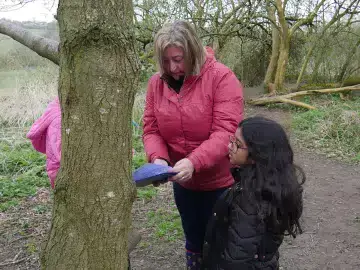
Habitat research
Learners explore three distinct habitats around the world: the Arctic, Antarctica, and the Sahara desert. They'll find out what each habitat is like, which animals live there and how they are adapted to their environment. Crucially, they'll explore how humans are affecting the habitat.
© This material is provided by Better Planet Education under CC BY NC ND 4.0
Preparation
What you need
- copies of all pdfs in resources section
Location
Outdoor
Resources
Step by step
- Download the step-by-step teacher guidance and the slides for each of the habitats.
- Resources within the slides could be given to different groups to research and compare habitats around the world.
Curriculum links
The resources can be adapted to suit different ages of learners by adding/deleting slides on the presentation and/or varying the level of detail used from the teacher notes.
Year 2 - Living things and their habitats
- identify that most living things live in habitats to which they are suited and describe how different habitats provide for the basic needs of different kinds of animals and plants, and how they depend on each other
- identify and name a variety of plants and animals in their habitats
- describe how animals obtain their food from plants and other animals, using the idea of a simple food chain, and identify and name different sources of food
Year 4 - Living things and their habitats
- recognise that environments can change and that this can sometimes pose dangers to living things
The resources can be adapted to suit different ages of learners by adding/deleting slides on the presentation and/or varying the level of detail used from the teacher notes.
Key Stage 1
- identify…the location of hot and cold areas of the world in relation to the Equator and the North and South Poles
Key Stage 2
- identify the position and significance of latitude, longitude, Equator, Northern Hemisphere, Southern Hemisphere, the Tropics of Cancer and Capricorn, Arctic and Antarctic Circle …
Key Stage 3
- develop contextual knowledge of the location of globally significant places - both terrestrial and marine - including their defining physical and human characteristics…
- understand how human and physical processes interact to influence, and change landscapes, environments and the climate …
- extend their locational knowledge and deepen their spatial awareness of the world’s countries…focusing on their environmental regions, including polar and hot deserts…
What to try next

Habitats
Begin activity
Record wildlife on your site
Begin activity